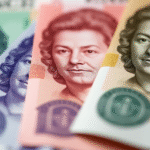Celebrating International Tea Day: Distinguishing True Teas from Caffeine-Free Infusions
Today, May 21st, marks the International Tea Day. Before you raise your cup, it’s crucial to understand what you’re drinking. Often, we use the term “tea” for any warm beverage made from plants. However, only drinks derived from the Camellia sinensis plant qualify as “true tea,” giving rise to varieties like white, green, black, oolong, and pu-erh teas. All these contain caffeine, albeit in varying amounts.
Conversely, herbal infusions or tisanas do not contain caffeine. They are brewed using flowers, herbs, spices, or fruits and are favored for their gentleness and lack of nervous system stimulation.
Caffeine-Free Herbal Infusions
Some popular caffeine-free infusions include chamomile, mint, anise, lemon balm, rooibos, cedrón, hibiscus flower, orange blossom, and lavender. These beverages soothe, hydrate, and do not affect the nervous system.
Why Does This Difference Matter?
This distinction matters because if you’re seeking focus, genuine tea can be your ally. However, if you’re about to sleep or sensitive to caffeine, herbal infusions are the better choice.
- Need energy and focus? Opt for green or black tea.
- About to sleep? Choose an infusion of lavender or chamomile.
- Feeling inflamed or anxious? Try lemon balm or ginger.
Moreover, many people mistakenly believe they’re consuming a “light” beverage when in fact, they’re consuming caffeine. Conversely, some seek an invigorating effect and drink a tisane that only relaxes them.
How to Easily Identify Them?
- If the packaging says “green, black, white, oolong, or pu-erh tea,” it contains caffeine.
- If it says “infusion of,” “tisane of,” or only mentions the plant (like peppermint), it does not contain caffeine.
- Some products combine true tea with herbs, such as green tea with mint. In these cases, they do contain caffeine, though in smaller amounts.
Key Questions and Answers
- What is the difference between tea and herbal infusions? Tea comes from the Camellia sinensis plant and contains caffeine, while herbal infusions are made from various plants like flowers, herbs, spices, or fruits and do not contain caffeine.
- Why should I care about this difference? If you need focus and energy, true teas are your best bet. However, if you’re about to sleep or sensitive to caffeine, herbal infusions are more suitable.
- How can I tell if a beverage contains caffeine? Look for terms like “green,” “black,” “white,” “oolong,” or “pu-erh” on the packaging, indicating caffeine content. If it mentions an herb or plant name without specifying a tea type, it’s caffeine-free.






